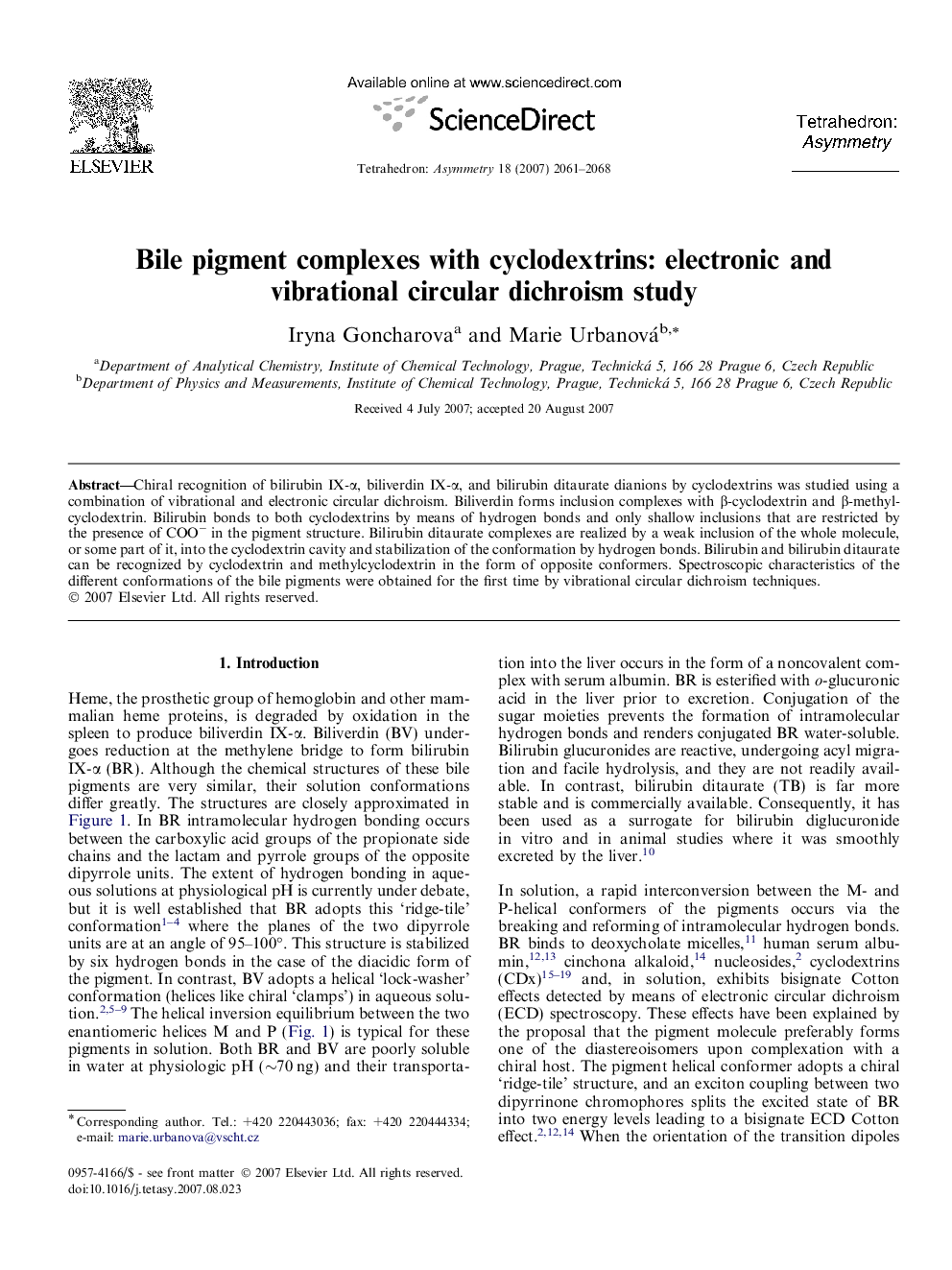| Article ID | Journal | Published Year | Pages | File Type |
|---|---|---|---|---|
| 1347829 | Tetrahedron: Asymmetry | 2007 | 8 Pages |
Chiral recognition of bilirubin IX-α, biliverdin IX-α, and bilirubin ditaurate dianions by cyclodextrins was studied using a combination of vibrational and electronic circular dichroism. Biliverdin forms inclusion complexes with β-cyclodextrin and β-methylcyclodextrin. Bilirubin bonds to both cyclodextrins by means of hydrogen bonds and only shallow inclusions that are restricted by the presence of COO− in the pigment structure. Bilirubin ditaurate complexes are realized by a weak inclusion of the whole molecule, or some part of it, into the cyclodextrin cavity and stabilization of the conformation by hydrogen bonds. Bilirubin and bilirubin ditaurate can be recognized by cyclodextrin and methylcyclodextrin in the form of opposite conformers. Spectroscopic characteristics of the different conformations of the bile pigments were obtained for the first time by vibrational circular dichroism techniques.
Graphical abstractECD and VCD spectra of biliverdin dianion in aqueous solutions with cyclodextrin (black) and randomly methylated cyclodextrin (red).Figure optionsDownload full-size imageDownload as PowerPoint slide
